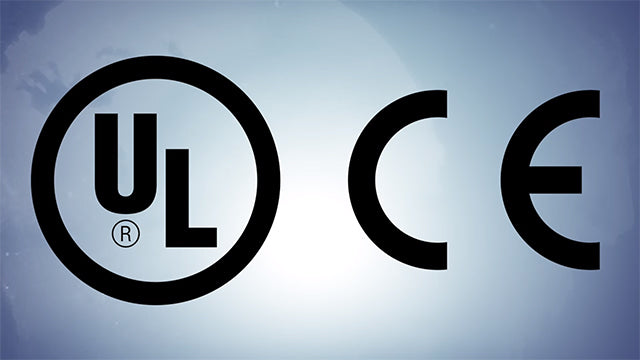
EN 15194 & UL 2849 & CFR 1512
Share
The following is a comprehensive analysis of the specific content differences and usage of the three major standards for electric bicycles: EN 15194, UL 2849 and CFR 1512:

Ⅰ. Standard positioning and scope of application
EN 15194 (European standard)
Positioning: The EU's comprehensive safety standard for electric power-assisted bicycles (EPAC), covering mechanical, electrical safety and electromagnetic compatibility (EMC).
Scope of application:Maximum continuous power 0.25 kW, motor assistance automatically cuts off at a speed of 25 km/h.
Applicable to electric bicycles used on public roads, excluding tricycles, racing vehicles and special-purpose vehicles.
Compliance with this standard can be presumed to meet the requirements of the EU Machinery Directive (2006/42/EC).
UL 2849 (North American standard)
Positioning: National standards of the United States and Canada, focusing on the safety of electric bicycle electrical systems, including batteries, chargers, controllers, etc.
Scope of application:Covering pedal-assisted (EPAC) and non-pedal-assisted (electric gate control) electric bicycles.
Involving electrical safety (such as overcharge, short circuit test), environmental testing (temperature rise, waterproof) and functional safety (preventing accidental start, brake cut-off).Amazon North America requires electric bicycles to provide UL 2849 certification.
CFR 1512 (US Federal Regulations)
Positioning: US mechanical safety regulations for bicycles (including electric bicycles), focusing on physical structures such as brakes, frames, and steering systems.
Scope of application:Define bicycles as "completely or mainly powered by human power", and electric bicycles must meet mechanical performance (such as brake load test, handlebar strength).
Requires all bicycles (including electric) sold on Amazon US to comply with this regulation.

Ⅱ. Core content differences
|
Dimension |
EN 15194 |
UL 2849 |
CFR 1512 |
|
Key Focus Areas |
Mechanical safety, Electrical safety, EMC |
Electrical system safety, Functional safety |
Mechanical structural safety (brakes, frame, etc.) |
|
Testing Content |
Battery compliance (IEC 62133), Power management, Torque testing, Frame strength |
Overcharge testing, Insulation resistance, Motor lock-rotation testing, Controller functional safety |
Brake load testing (445N force applied), Handlebar strength (2000N load-bearing capacity), Chain tensile strength |
|
Power/Speed Limits |
0.25 kW, 25 km/h |
No explicit limits, but must comply with functional safety requirements |
Motor power <750W, speed <20 mph (non-mandatory electrical restrictions) |
|
Market Applicability |
Core standard for EU market access |
Core standard for North American market access |
Fundamental mechanical safety requirement for the US market |

Ⅲ. Usage scenarios and compliance requirements
EN 15194
Usage scenarios: Electric bicycles exported to the EU must pass EN 15194 certification to prove compliance with the Machinery Directive and EMC requirements.
Additional requirements: The battery must comply with IEC 62133 or EN 50604-1 standards, and the charger must meet the 48V DC or 230V AC input limit.
UL 2849
Usage scenarios: Mandatory requirements for the North American market (especially Amazon), requiring UL 2272 (battery) or UL 2580 (power battery) certification.
Key revisions: In 2020, functional safety assessments of motor controllers were added, such as preventing accidental start-up.
CFR 1512
Usage scenarios: All bicycles (including electric) sold in the United States must meet this regulation, focusing on mechanical safety, such as the brake system must pass a load test (445N force).
Amazon requires: Electric bicycles must submit CFR 1512 test reports and UL 2849/EN 15194 certification at the same time36.
Ⅳ. Summary and suggestions
EU market: Prioritize EN 15194 (including EMC testing), and be careful to exclude special models such as tricycles710.
North American market: Must comply with CFR 1512 (mechanical safety) and UL 2849 (electrical safety), Amazon and other platforms have mandatory requirements68.
Global multi-market layout: It is necessary to select a combination certification according to the target region (such as EN 15194 for the EU and UL 2849+CFR 1512 for North America), and pay attention to standard updates (such as the 2020 revision of UL 2849)
